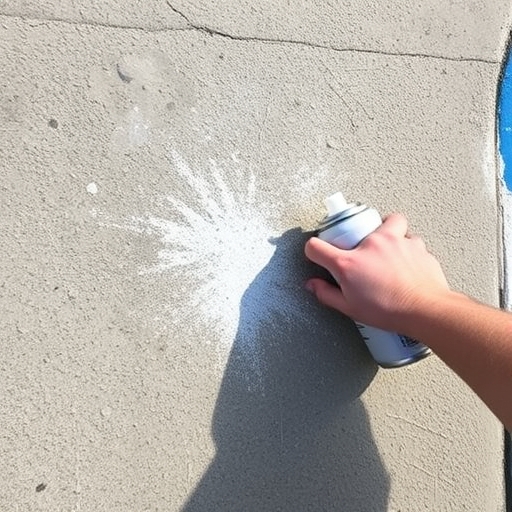How to Get Spray Paint Off Concrete
Spray paint can transform surfaces, but when it ends up on concrete where it doesn’t belong, it can be a frustrating challenge to remove. Whether it’s a graffiti mishap, an art project gone awry, or an accidental spill, removing spray paint from concrete requires the right techniques and tools. In this article, we’ll explore various methods for removing spray paint from concrete, including both DIY solutions and professional options.
Understanding the Challenge
Concrete is a porous material, which means it can absorb paint and make removal more difficult. The texture of concrete can also trap paint particles, making it essential to act quickly and use the appropriate methods.
Factors to Consider
- Type of Spray Paint: Oil-based, water-based, and acrylic paints have different properties and may require different removal techniques.
- Age of the Paint: Fresh paint is generally easier to remove than paint that has cured for several days or weeks.
- Surface Texture: Rough surfaces may hold more paint, making removal more challenging.
- Cover Surfaces: Always cover concrete areas when spray painting to avoid overspray.
- Use Drop Cloths: Lay down drop cloths to catch any accidental spills.
- Choose the Right Paint: If you must paint concrete, consider using paint specifically designed for that surface.
Methods for Removing Spray Paint from Concrete
1. Using Chemical Paint Strippers
Chemical paint strippers are specifically designed to break down paint and make it easier to remove. Here’s how to use them effectively:
Steps:
1. Choose the Right Stripper: Look for a product designed for concrete and effective against spray paint.
2. Prepare the Area: Ensure the area is well-ventilated. Use protective gear, including gloves and goggles.
3. Apply the Stripper: Follow the manufacturer’s instructions for application. Typically, you’ll need to apply a thick layer of the stripper over the paint.
4. Wait: Allow the stripper to sit for the recommended time (usually 15-30 minutes).
5. Scrape Off the Paint: Use a putty knife or scraper to remove the loosened paint.
6. Rinse the Area: Use a pressure washer or hose to rinse the area thoroughly.
2. Using a Pressure Washer
For larger areas or more extensive paint coverage, a pressure washer can be an effective tool.
Steps:
1. Set Up the Pressure Washer: Use a pressure washer with a nozzle that creates a wide spray pattern.
2. Test the Pressure: Start with a lower pressure setting to avoid damaging the concrete.
3. Apply Water: Spray the area with water to loosen the paint.
4. Increase Pressure: Gradually increase the pressure until you see the paint starting to lift.
5. Repeat as Necessary: You may need to go over the area multiple times to remove all the paint.
3. Using Baking Soda and Vinegar
For a more eco-friendly approach, a combination of baking soda and vinegar can work wonders.
Steps:
1. Sprinkle Baking Soda: Generously sprinkle baking soda over the painted area.
2. Spray Vinegar: Spray white vinegar over the baking soda until it begins to fizz.
3. Scrub: After the fizzing has stopped, use a stiff-bristle brush to scrub the area.
4. Rinse: Rinse the area with water to remove any residue.
4. Using Acetone or Nail Polish Remover
Acetone is a powerful solvent that can effectively break down paint.
Steps:
1. Apply Acetone: Soak a cloth with acetone or nail polish remover and apply it to the painted area.
2. Let it Sit: Allow the acetone to soak for a few minutes.
3. Scrub the Area: Use a scrubbing brush or scraper to remove the paint.
4. Rinse Thoroughly: Rinse the area with water to remove any remaining acetone.
5. Using a Heat Gun
A heat gun can help soften the paint, making it easier to scrape off.
Steps:
1. Heat the Paint: Use a heat gun on a low setting to warm the paint. Keep the gun moving to avoid burning the concrete.
2. Scrape Off the Paint: Once the paint begins to bubble, use a putty knife to scrape it off.
3. Cool Down: Allow the area to cool before rinsing.
Comparison of Methods
| Method | Effectiveness | Difficulty | Cost | Eco-Friendliness |
|---|---|---|---|---|
| Chemical Paint Stripper | High | Medium | Moderate | Low |
| Pressure Washer | High | Low | Moderate | High |
| Baking Soda & Vinegar | Medium | Low | Low | High |
| Acetone | Medium | Medium | Low | Medium |
| Heat Gun | High | High | Moderate | Medium |
Tips for Preventing Future Issues
Frequently Asked Questions (FAQ)
Q1: Can I use bleach to remove spray paint from concrete?
No, bleach is not effective for removing paint and may damage the concrete surface.
Q2: How long does it take for paint strippers to work?
Most paint strippers require 15-30 minutes to effectively break down the paint, but it can vary by product.
Q3: Will removing spray paint damage my concrete?
If done carefully, the methods outlined should not damage the concrete. However, using excessive force or high pressure can lead to surface damage.
Q4: Is it safe to use these methods indoors?
Many of these methods, especially those involving chemical strippers and acetone, should be used outdoors or in well-ventilated areas due to fumes.
Q5: What should I do if the paint won’t come off?
If initial attempts fail, consider hiring a professional who has access to more advanced tools and chemicals.
Conclusion
Removing spray paint from concrete can be a challenging task, but with the right methods and tools, it is certainly achievable. Whether you choose to use chemical strippers, a pressure washer, or eco-friendly solutions like baking soda and vinegar, it’s essential to act quickly and follow the appropriate steps. By taking preventive measures in the future, you can minimize the risk of dealing with unwanted paint on your concrete surfaces again.

